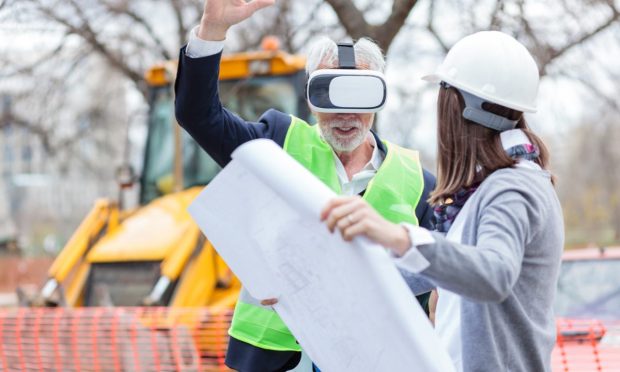Advances in Metaverse Mapping Promise Trickle-Down Improvements IRL

Companies are betting, and losing, billions that the world of tomorrow will include the metaverse.
That’s as the concept of virtual world platforms, historically associated most with gaming experiences, has begun to generate both speculation and commercial interest in other far-flung fields including medicine and heavy industry.
Many observers also believe metaverse-mapped digital twin environments hold great potential for advances in municipal city planning and global real estate development in the physical world.
Potential applications of virtual world metaverse platforms include allowing a property developer from one city to virtually visit digital-twin replicas of different markets and bid on available plots of land or share digitally created in-situ building proposals for regulatory approval. There is also the possibility to allow potential tenants or homeowners to virtually tour and even suggest modifications to residences before they are constructed or renovated in real life.
For urban planning, the metaverse provides a way to simulate development in an open platform where relevant parties can get a sense of the space under discussion and collaboratively develop solutions to challenges like air pollution, transportation, and community services.
This, as virtual land development in the metaverse has itself stalled since a frenzied 2021-2022 peak that saw digital real estate platforms like Decentraland and The Sandbox both reach valuations north of a billion dollars, despite active user bases that never grew beyond the low thousands.
With even Mark Zuckerberg’s titanic tech company Meta losing more than a billion dollars every month on its own virtual world strategy, it is clear that a massive disparity between market hype and actual value plagues the prospect of 3-D-enabled digital spaces that use virtual reality (VR), augmented reality (AR), and other bleeding-edge technologies to allow for lifelike, immersive online experiences.
Growing Need for Quality Digital Infrastructure
The effectiveness of services rendered in the metaverse naturally depends on the quality of the digital infrastructure over which they’re provided.
Both detractors and supporters of the metaverse alike can agree that most experiences available today across virtual worlds are best described at times as clunky.
Fortunately, advances in high-precision mapping technology promise to update this experience by building high-definition and 3-D maps far more accurate than anything currently available today.
These next generation mapping systems will help chart the future course of navigation, logistics and spatial data collection, as well as urban planning and real estate development.
Architects and urban planners have for decades been using whatever available tools were at their disposal to create prototypical built environments, be it X-Acto knives and cardboard or rendered virtual assets, which is what makes the metaverse’s 3-D environment, where every asset and process can be replicated virtually and connected, such a turn-the-page advance.
Three-dimensional maps of buildings and streets that include precise information on incline and decline gradients, traffic lane volumes, and other relevant, real-time cartographic information, will allow for powerful new advances in urban prototyping as well as give real estate developers carte blanche in developing innovative new projects where physical limitations are no longer part of the equation.
Read more: The Metaverse IRL: Virtual Prototyping Powers Industry 4.0 Transformation
As PYMNTS wrote earlier, “If properly leveraged, the industrial metaverse might remove the phrase ‘back to the drawing board’ from the common lexicon.”
It may just do the same for architects and urban planners.
Developers and local governments are already sitting on valuable troves of data collected about their civic environments, and the metaverse provides a technical architecture that allows for these rich and robust data sets to be brought to life by creating explorable, manipulable environments that can inform real-world decisions in real time.
For example, the city of New Rochelle, New York, has already built a virtual reality metaverse platform called NRVR to help its residents understand and visualize what proposed developments might look like in reality.
Allowing people to visually immerse themselves in a distant place promises attractively transformative benefits across industries.
But replicating cities in the metaverse will involve streaming data from thousands, if not millions, of smart devices, and consolidating that material and parsing sense of it all will require whole new kinds of networking infrastructure.
As much as the internet is accessible in the vast majority of countries, connecting millions of servers and billions of devices and people, there is no live, simultaneously synchronous experience that can connect all users. The metaverse hopes to one day achieve this vision of global connectivity.